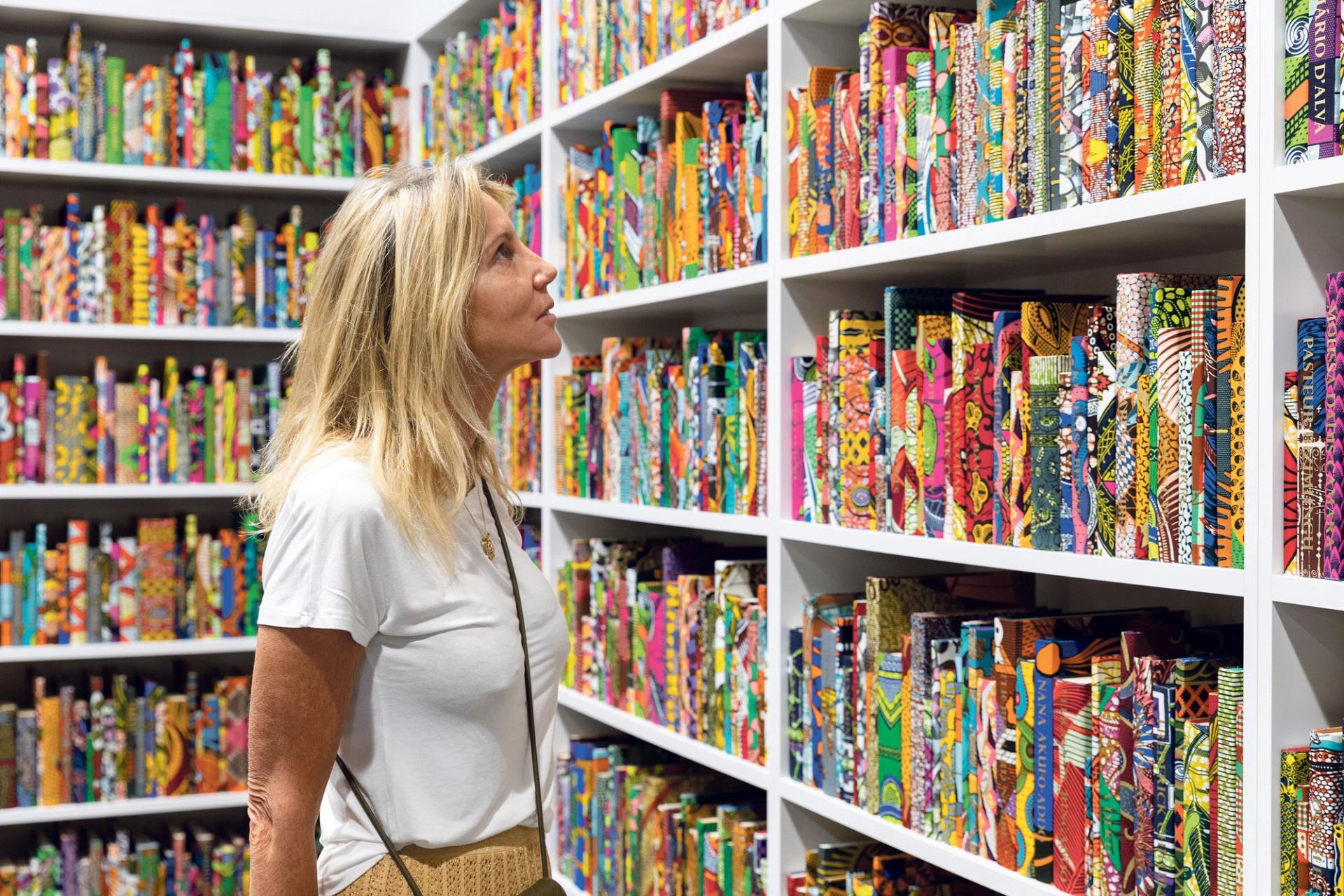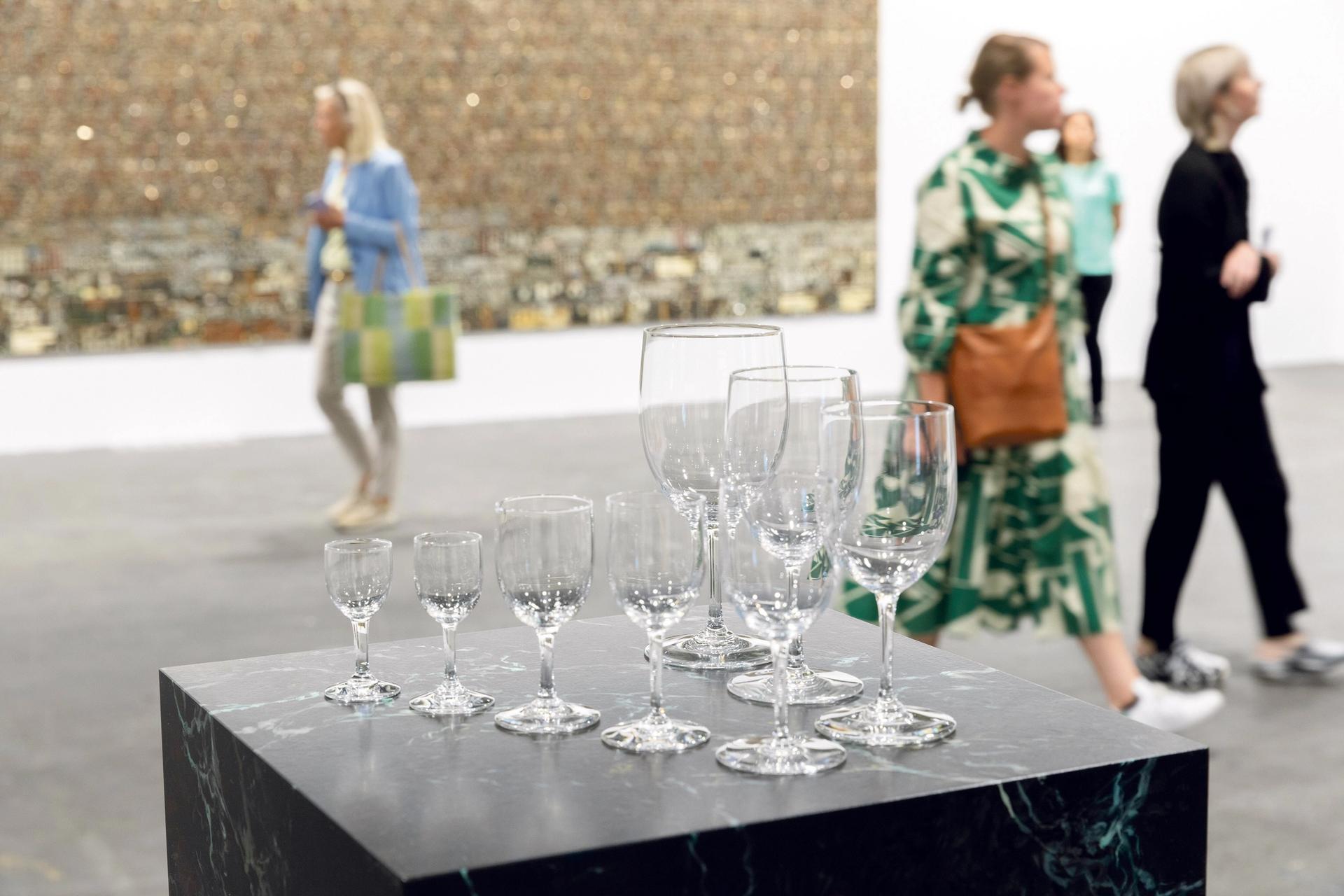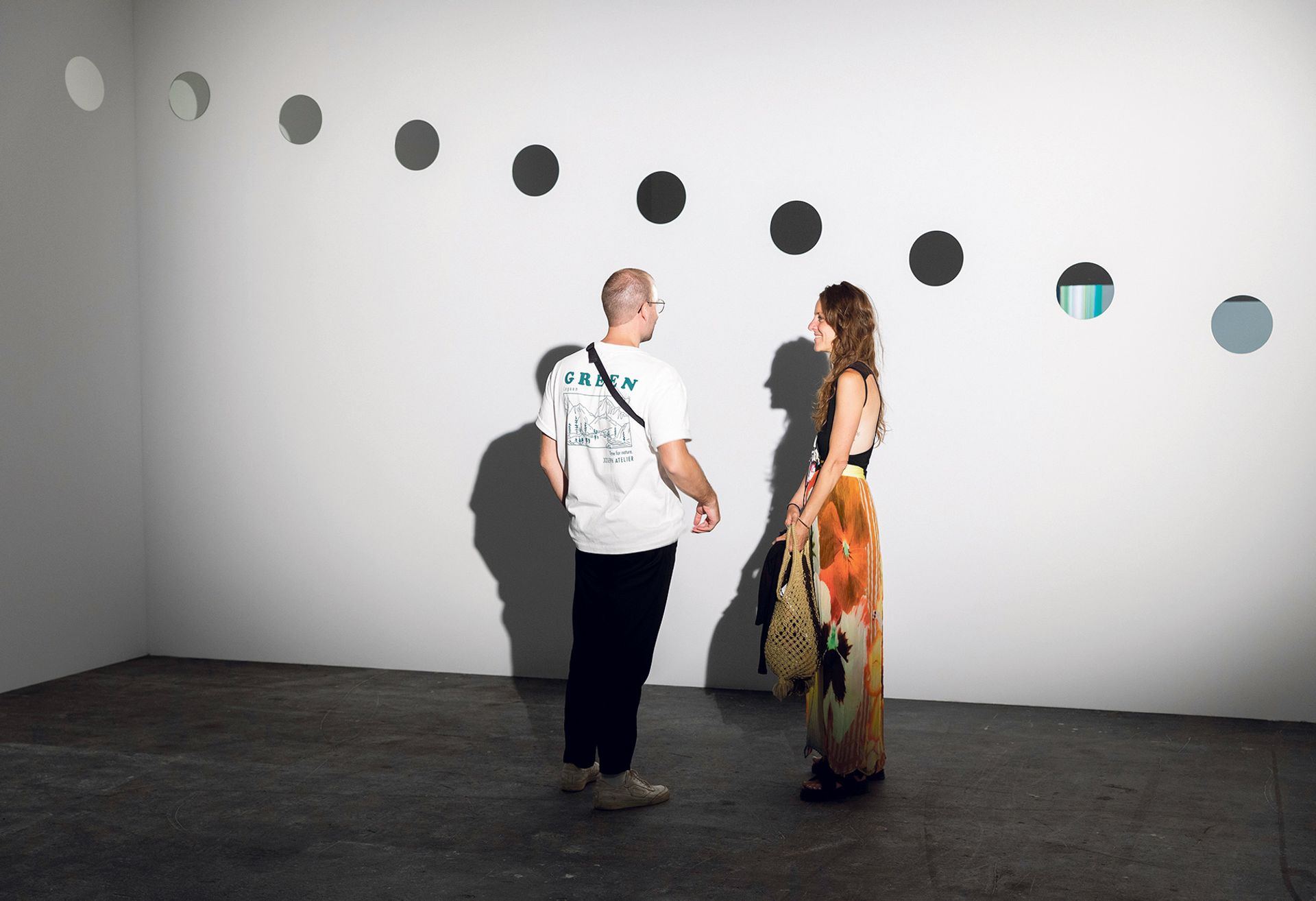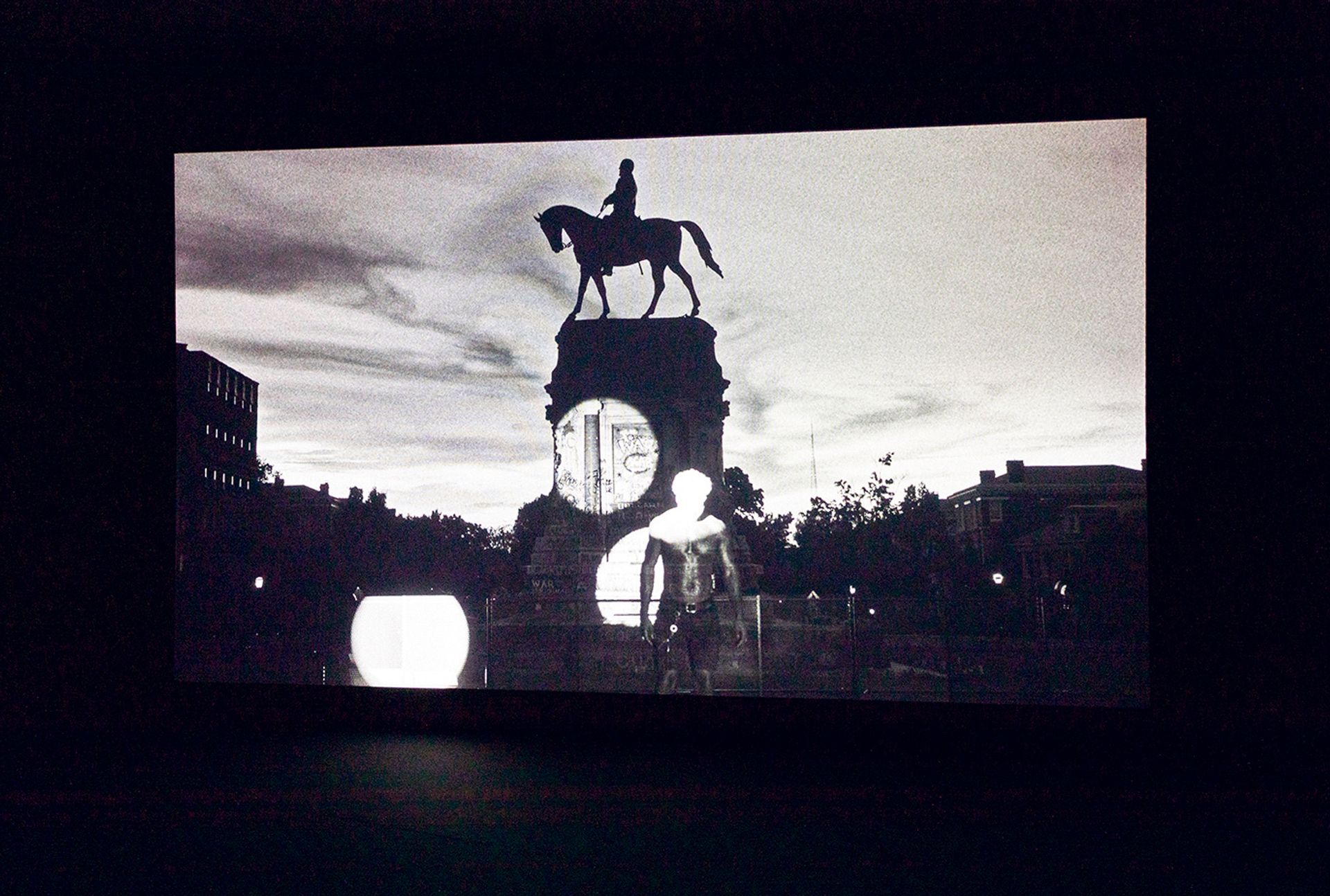Choosing the centerpieces from the 76 large-scale works that make up the Unlimited section of Art Basel is “particularly difficult this year”, says curator Giovanni Carmine, “because I think we have some amazing pieces”. It helps that this is the first year since Carmine’s appointment in 2019 that has been free of Covid-related logistical complications.
Rather than being defined by a theme, the power of Unlimited lies in the freewheeling mix it offers, for example, between the minimalist sculpture of land art pioneer Nancy Holt and a performative installation by the artist emerge Augustas Serapinas. Unlimited is above all a place of artistic contrasts that “generate tension, dynamism and a kind of dramaturgy”, says Carmine. “This is also what makes this platform interesting for a curator.

Lubina Himid, A fashionable wedding (1986), Hollybush Gardens david owens
Lubaina Himide
A fashionable wedding (1986), Hollybush Gardens
“It’s a landmark piece from 1986, which was visionary at the time, dealing with art history, taking a painting by Hogarth and reshaping it, reforming it, putting a black woman at the center of it. Lubaina Himid was also dealing with Thatcherism, what was happening in England in the mid-1980s. written in the newspaper clippings, with references to art history, gender, but also Margaret Thatcher. There’s anger in there; it’s an incredible piece.
“It’s a landmark piece from 1986, which was visionary at the time, dealing with art history, taking a painting by Hogarth and reshaping it, reforming it, putting a black woman at the center of it. Lubaina Himid was also dealing with Thatcherism, what was happening in England in the mid-1980s. written in the newspaper clippings, with references to art history, gender, but also Margaret Thatcher. There’s anger in there; it’s an incredible piece.

Yinka Shonibare, The African Library (2018), Goodman Gallery david owens
Yinka Shonibare
The African Library (2018), Goodman Gallery
“This piece begins a reflection on who are the most important figures for the African continent, with the names on the sides of the books. It is a sort of monument to the rewriting of history. Of course, not all the books are named because this story is yet to be written. Some personalities are known, such as Patrice Lumumba or Nelson Mandela, but others are less known to the European public. It is important to discover these personalities, to rewrite history in a more egalitarian way and to think about colonialism.

Yuki Kimura, SPORCAR SI TROVA COLLAR (2022), Taka Ishii Gallery, Chantal Crousel Gallery david owens
Yuki Kimura
SPORCAR SI TROVA COLLAR (2022), Taka Ishii Gallery, Chantal Crousel Gallery
“We worked a lot with Kimura to find the right placement for this piece. All these objects on plinths speak of reflection, so we had to find the right space where other works of art are reflected in it. The reflections are generated by natural materials such as mother-of-pearl or by stainless steel or glass reflecting on vinegar. It’s a special piece because we have monumental works here and it’s rather calm and poetic, with little things that could get lost with the mass of people coming and going in Unlimited. It’s interesting in this context to have a piece like this.

Nancy Holt, Mirrors of Light I (1974), Sprüth Magers david owens
Nancy Holt
Mirrors of Light I (1974), Sprüth Magers
“Nancy Holt is a very important Land artist. It’s great to have this historical piece from the 1970s, which is also something much calmer. It sums up all his thinking about space and light, and how they generate poetry on the one hand but also generate meaning together. Accuracy means this was not an easy part to install. In Unlimited, galleries can really show the works in perfect conditions. Pieces like this require special care to show.

Monique Bonvicini, Never again (2005), Peter Kilchmann Gallery, Krinzinger Gallery, Tanya Bonakdar Gallery david owens
Monique Bonvicini
Never again (2005), Peter Kilchmann Gallery, Krinzinger Gallery, Tanya Bonakdar Gallery
“We all know Bonvicini’s work is about power, sexuality, architecture. I think it’s a very representative piece; she often uses the sadomasochistic aesthetic with black leather and chains. I have followed his work for many years and am very happy to be able to show one of his important works after his retrospective in Berlin. It is an interactive work; people can sit on the chairs. Ideally, it should be shared – the swings are for two – so it’s also a piece about the interaction between human beings.

Adam Pendleton, Toy Soldier (Notes on Robert E. Lee, Richmond, Virginia / Strobe) (2021-22), Rhythm david owens
Adam Pendleton
Little soldier (Notes on Robert E. Lee, Richmond, Virginia/Strobe) (2021-22), Rhythm
“It’s a very powerful piece by Pendleton, not only because its aesthetic is at the top but also because it speaks to the subjects that define his practice: the black community, the reconquest of space. He is an artist very formal and very precise in his work.Through editing, he managed to erase and transform the monument of Confederate General Robert E. Lee, which was controversial in the southern states of the United States.The film focuses on the image of this monument but, by casting lights on it and cutting it, he gives the monument a whole new meaning.
